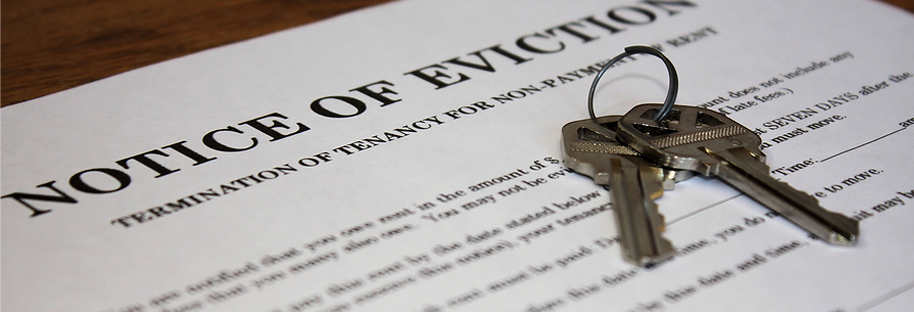Notices
The ‘Standard’ Possession Procedure aka ‘Section 8 Procedure’
If your tenant(s) are at least two months in arrears and you would like to get your property back together with a Court Order for the outstanding rent arrears then you will need to issue a Section 8 Notice.
A Section 8 Notice can be served at any time during the term of the Assured Shorthold Tenancy Agreement (AST) and expires after a period of 14 days at which point you can begin possession proceedings.
The notice is not a simple demand for possession or rent arrears.
The Housing Act 1988 as amended by The Housing Act 1996 provides certain grounds under which a Landlord can apply for possession of a property during the fixed term of the AST.
The grounds fall into two distinct categories, Mandatory grounds for possession, where if proved the Court will have no discretion in whether or not to award possession of the property, and Discretionary grounds for possession where the Court will be able to decide whether to grant possession or not.
If you intend to seek possession via the Section 8 Procedure, you must state which grounds you intend to rely on in the Notice. Any error in the Notice will void the procedure delaying your repossession.
In cases where the claim includes a claim for rent arrears the most common grounds are grounds 8, 10 and 11 which includes both Mandatory grounds for possession coupled with Discretionary grounds providing the best chance of successfully obtaining possession at a hearing. If you are able to prove these grounds, the court will have no option other than to grant you possession of the property.
All claims for possession during the fixed term must be preceded by correctly serving a Section 8 Notice. In order to have the best chance of obtaining possession of the property quickly it is important to get the Notice correct and expert advice is highly recommended.
‘The Accelerated Procedure’ – Section 21
If you want to recover possession of your property for any reason other than for a breach of the tenancy agreement, you may use the ‘Accelerated Procedure’.
The Notice can be issued without giving a reason for ending the tenancy agreement however in order for the Notice to be valid; the correct procedure must be followed.
The notice must be served in writing and it must be the correct notice. Section 21 Notices come in two forms, Notice for Termination for the AST served during the fixed term of the tenancy and a Notice for Termination of an AST during a Periodic Assured Shorthold Tenancy (Periodic Tenancy).
The Notice during the fixed term of the AST requires that the tenant receives at least two months notice of your intention to recover possession of the property. The Notice period begins upon receipt of the notice. The Notice can be served at any time during the tenancy; however the date for possession cannot be before the end of the fixed period of the tenancy agreement.
A fresh section 21 Notice will be required each time a further fixed term is agreed with your tenant.
If the tenant is subject to a Periodic Tenancy the procedure is slightly more complicated and requires a notice period of not less than two months, however the period of notice must end on a the day prior to a rent renewal period which will depend entirely on how the tenancy is formed be it weekly or monthly and when the rent is paid.
The difficulty here is that if this date is incorrect, the notice will be invalid and proceedings to recover possession of the property will fail. A fresh Section 21 notice of at least two months notice will have to be served delaying possession of the property considerably.
If you intend to seek possession via the accelerated it is important to get the Notice correct and expert advice is highly recommended.











